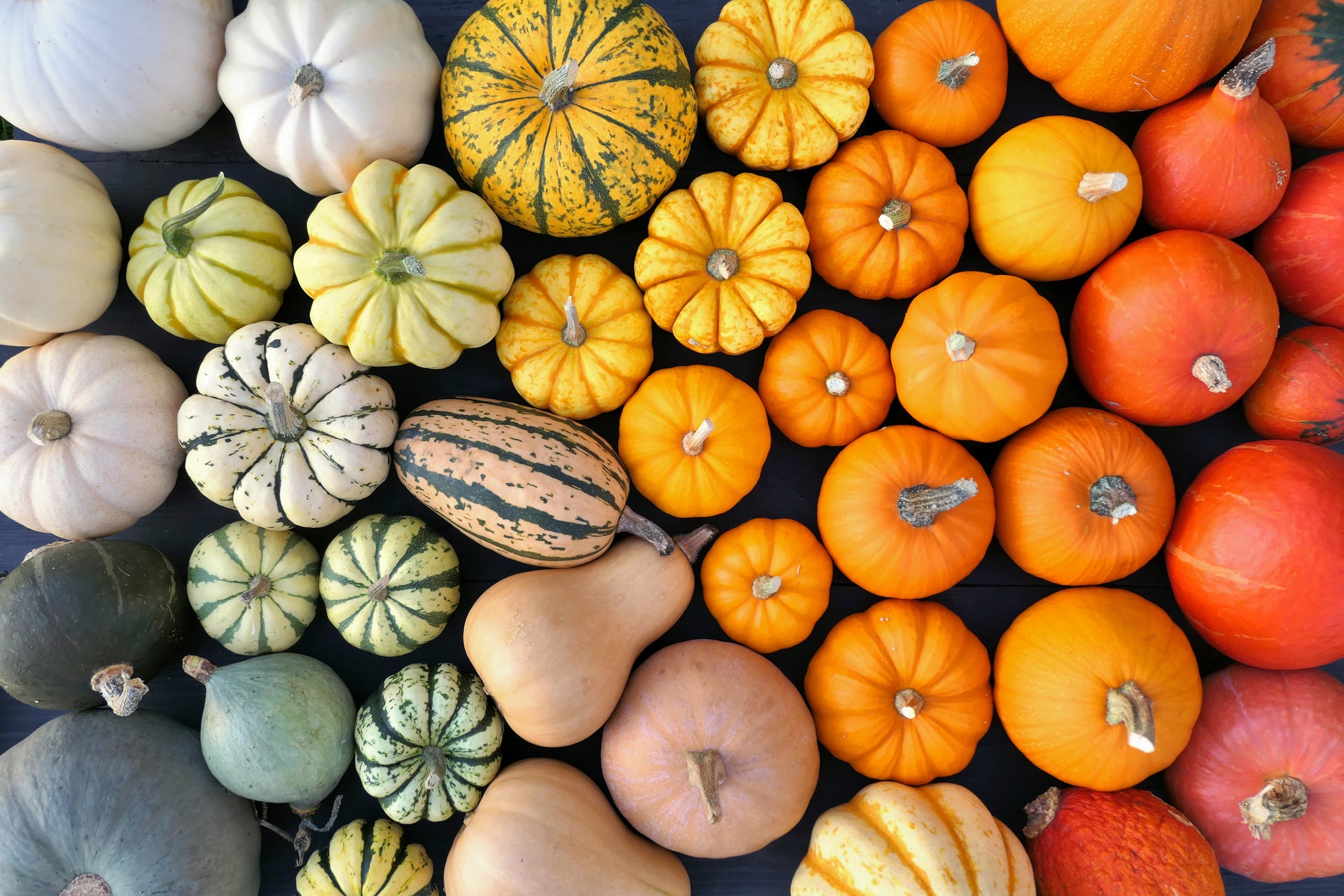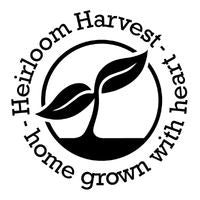
Think you know what an heirloom vegetable is?
The terms heirloom seeds, heirloom vegetables and heirloom varieties are becoming commonplace within gardening circles. The terms invoke a sense of connection with the past, a bygone era, a golden age. In addition to these nostalgic emotions there are many good practical reasons to grow heirloom varieties. Unfortunately, like many ‘trendy’ terms such as ‘sustainable’ or ‘eco’, ‘heirloom’ is running the risk of becoming meaningless through over use, miss-use and hijacking by marketing. To give an example of what I mean, I was walking down the street the other day and saw a sign for “eco” tans, what on earth could be ecological about a fake tan? To avoid this happening to the term “heirloom” we need a clear definition and to identify where use of the term is straying from that definition. So what is an heirloom vegetable and how should we use the term correctly? Here is my take on the subject.

Definitions are always tricky, language is not static, meanings change and evolve over time and old words are given new life in a modern context. This is the case with the term ‘heirloom’ in relation to vegetable varieties. The word heirloom is actually a 15th century word derived by combining the old French word ‘heir’, as in ‘inherit’, with the old English word ‘loom’ meaning an implement or tool (best known as in a weaving loom). Hence, its original meaning was “a tool or implement that is passed on from one custodian to another”. Although the term literally referred to tools or implements, the narrowness of the meaning was quickly relaxed to include other objects of value (not necessarily in monetary terms) such as furniture and jewellery.
There are many combinations of terms used with heirloom in relation to vegetable varieties such as heirloom seeds, heirloom vegetables and heirloom varieties. So which term should we use? In my opinion the most accurate term is - heirloom varieties, or more accurately heirloom cultivars (cultivated varieties). This is because it is the characteristics of the cultivar that persist throughout time (or generations), not the individual plant, fruit or seeds. For this reason, when used in the context of vegetables, the literal meaning of an heirloom cultivar would be “a vegetable cultivar of value passed on from one custodian to the next”. Based on this literal meaning, in order to classify as an heirloom variety there are three necessary criteria that must be met.

1. The variety must have some ‘value’.
2. The variety must be able to be ‘passed on’.
3. The variety must actually be ‘passed on’.
Let’s explore these criteria in a bit more detail.
The variety must have some ‘value’.
What is considered ‘valuable’ in relation to vegetable cultivars can vary greatly and this is one of the main factors contributing to the great diversity of heirloom cultivars. For home gardeners or local market gardeners, traits often thought to be valuable are: flavour, local adaptation, yield, disease resistance, colour, diversity. These traits somewhat differ from what is thought to be of value to large scale ’factory farms’ such as: uniformity, ability to withstand transport, synchronized ripening, yield, and disease resistance.
The variety must be able to be ‘passed on’.
In order for a variety to be able to be ‘passed on’ it must be a stable variety which can reproduce true to type. For most vegetables this ability is commonly referred to as being open-pollinated. This is a whole topic in itself, but in short, an open pollinated variety is one in which plants will breed true to type if allowed to be pollinated openly by itself or others of the same variety. This differs to F1 hybrids and varieties derived from other modern breeding techniques whose offspring will not consistently exhibit the same characteristics as the parents. Another more recent consideration for a variety to be able to be ‘passed on’ is the legal ownership of varieties. Plant breeder rights may prohibit the saving of seed from a variety, effectively excluding it from being legally ‘passed on’.
The variety must actually be ‘passed on’.
When it comes to passing heirloom cultivars from one ‘custodian to the next’, heirloom cultivars differ from other heirlooms in one significant way. While most traditional heirlooms such as furniture or jewellery can be handed down from one generation to the next with little maintenance or work to maintain their ‘value’, vegetable cultivars are not static objects; they require continued work and maintenance to maintain their value. Vegetable cultivars can be stored for a limited time as seed but require regular growing out and renewal to maintain their value into the future. Not only must the seeds be grown out, but care must be taken to keep the cultivar from crossing pollinating with other cultivars of the same species, thereby diluting their identity and value. So, for a variety to classify as an heirloom, it must be maintained through multiple generations of the cultivar as well as multiple generations of humans.

Based on this further examination of the original literal meaning, the criteria for a cultivar to classify as an heirloom can be expanded and clarified to:
1. Have some intrinsic value.
2. Be open-pollinated or otherwise breed true to type.
3. Not be subject to a patent or plant breeders’ rights.
4. Have its identity and purity maintained over multiple generations of plants and custodians, through careful growing out and seed saving.
A survey of recent literature and even dictionary entries shows that there is a trend by modern authors away from this literal meaning. While most authors would not argue with the necessity of the above criteria; many authors try to add other criteria not included in the literal meaning. The reasons for this can vary from lack of information to personal interest. I feel one of the main reasons is that people want to emphasise the sense of nostalgia that the term evokes. Unfortunately, in my opinion, this trend has many major problems. For example, one of the most common (and most mistaken) criteria is placing a date which a cultivar must have been bred before to classify as an heirloom cultivar. I call this the ‘date definition’. While the exact date differs between authors, it is commonly based on the introduction and widespread use of hybrid cultivars (which cannot meet the above criteria) and is around the 1950’s.
One of the strong points of the ‘date definition’ is that it makes it easy to ensure that a cultivar meets the above definition. Basically, all cultivars before the 1950’s met the above criteria, while many cultivars developed since the 1950’s, especially those pushed by large commercial seed companies, do not meet the criteria. The problem with this is that it is an over simplification, ‘many’ is not ‘all’. In fact, many gardeners and farmers continued to and still do develop cultivars by traditional means which can meet all of the above criteria. For these cultivars the “date definition” is completely arbitrary. There is no technical difference between cultivars developed by traditional mean in the 1940’s to those developed in the 1960’s, 70’s, 80’s….
In addition, the ‘date definition’ assumes that older is always better. It also assumes that cultivars are static. One of the greatest things about heirloom cultivars, and one of the most compelling reasons for growing them, is their ability to adapt to new conditions and changes in local conditions (e.g. climate change…?). By the ‘date definition’, no cultivars which have been adapted to local conditions since the 1950’s can ever be called an heirloom cultivar, even if they meet all the above criteria; to me this absurd.
Most of the other ‘extra’ criteria which modern authors try to include in their definitions of heirloom cultivars run into simular problems. For this reason I propose that we stick to the more literal meaning of ‘heirloom’ in relation to vegetable cultivars. It can still portray the sense of nostalgia that many people enjoy but without running into absurdities which only help damage the usefulness of the term and open it up to the type of word hijacking mentioned earlier.
